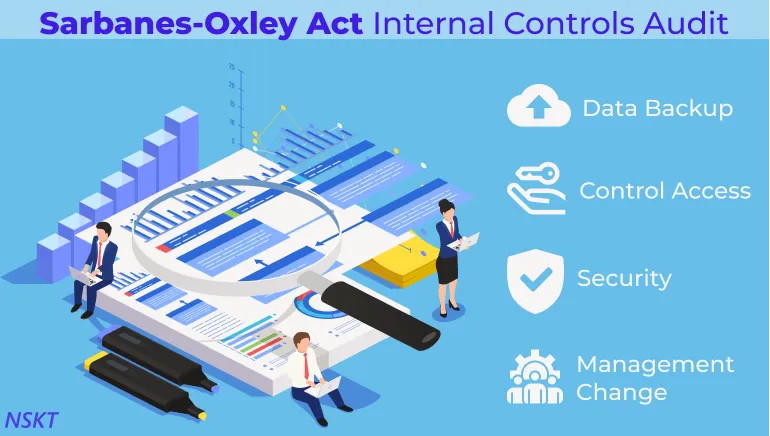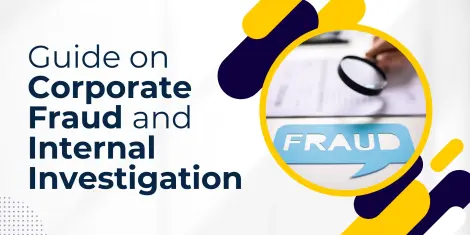Table of Contents
What is Sarbanes-Oxley (SOX)?
SOX was passed by the United States Congress in the year 2002 to protect the interest of shareholders, stakeholders, and the general public of the United States discourage fraud done by corporate firms, and refine financial disclosures. The main aim of the legislation was to increase transparency in financial reporting by corporate firms. SOX is not just a legal obligation but also a business practice. implementing SOX for financial security controls protects the company from any kind of data theft by cyber-attacks or insiders.
History of SOX compliance
This bill was written by Senator Paul Sarbanes and Representative Michael G. Oxley in response to corporate scandals in Enron, WorldCom, and Tyco. The main goal of SOX was to protect investors by improving the accuracy and reliability of corporate disclosures.
Who must comply with SOX?
All Publicly traded companies in the United States as well as wholly owned subsidiaries and foreign companies who are publicly traded and doing business in the United States need to comply with SOX. Accounting firms doing audits of the companies must also comply with SOX. SOX can penalize private organizations that knowingly tries to falsify or destroy financial data. Private companies that are planning an initial public offering must prepare to comply with SOX before going public.
What are the benefits of SOX compliance?
SOX has majorly changed the internal controls of companies. After the implementation of SOX, companies have started prioritizing risk management and have taken steps to align SOX compliance with a business objective to sustain the core values of their respective businesses. Given below are some of the main benefits of SOX Compliance:
- As per sections 302 and 404 of SOX, there is a requirement for documentation of controls including operation manuals, personal policies, and recorded control processes. By following a standard framework an organization can build its internal control structure and streamline the control processes’ documentation.
- By implementing SOX, companies are safer from cyberattacks and data breaches as they become very expensive to manage and clean up, and companies might never recover the damage to their brand.
- A business needs to go through extensive internal control tests and accuracy certification to meet the needs of SOX compliance. This makes companies capable of maintaining the standard quality of financial reporting, automating, and centralizing it.
- SOX-compliant companies report more predictable finances than non-SOX-compliance companies, which makes the stakeholders happy. Companies have also reported easy access to capital markets because of the improved financial reporting.
- By incorporating a comprehensive risk management procedure, businesses can achieve transparency and can mitigate the risks on time. These tools also help in monitoring the overall operational performance of your company and save it from the increasing risk of fraud activities.
SOX compliance Audits
A SOX compliance audit helps in measuring the financial statements of the company and analyses the management of internal controls. The main aim of a compliance audit is to verify the company's financial statements. SOX compliance makes the yearly audit of companies mandatory, and also makes the report available easily to stakeholders. SOX Audit is done by a separate auditor hired by the company so that there is no conflict of audits from other departments. A SOX compliance auditor compares the past statement of the company with the current year and determines if everything is going well or not. They also interview different persons from the compliance department to verify if the compliance is sufficient enough to maintain SOX compliance standards.
How to prepare for SOX compliance audit?
The most common thing while preparing for a SOX audit is to make sure that all the reporting and internal systems are updated. Also, check if all the SOX compliance software systems of the company are working correctly or not.
SOX Internal Controls Audit
SOX auditor of the company investigates four internal controls as a part of the yearly audit. Given below are the four internal controls that need to be present for SOX compliance:
- Data Backup- It is very important for the company to maintain an offsite backup of all the financial records. This is a part of SOX compliance.
- Access- Access to both the physical controls (Door, locks, badges, etc.) and electronic controls (login policies, permission audits, and least privileged access) must be given to the employees in a limited amount. Each user must have access to only the required data related to their job, it is a must requirement of SOX compliance.
- Security- A company must have a defense plan to counter any kind of data breach in the near future.
- Change management- Any kind of change that happens inside the organization must be handled securely. It is a must-have for SOX compliance.
SOX Compliance Checklist
- Safety from data tampering: For a SOX compliance checklist, the foremost important criterion is protection from data tampering. To provide safety from unauthorized access and tampering, a robust ERP system or GRC software is mandatory, which will assist the management to track login access to every sensitive data resource. This will also assist in identifying break-in attempts into databases, fixed or removable storage devices, websites, and computers.
- Binding through timelines: One of the major changes a firm can do for getting a robust SOX Compliance is to use ERP software that timestamps the data as soon as it arrives and maintains logs. This helps in the prevention of data loss and alteration as the data is stored remotely and securely, the moment it is received. The firm can also use M% checksum encryption for preventing any further tampering of data.
- Tracking Data Access: If the firm has a limited number of supported channels through which data messages are reached, then it will be difficult to trace back the change. Thus, it is recommended to firms to opt for an ERP system that is capable of receiving data messages through an unlimited number of sources, in virtual mode; independent of framework used i.e. COBIT and ISO/IEC. Supported channels should include FTP transfers, file queues, databases, etc.
- Report of Steps taken: Executing random steps for SOX compliance will not ensure compliance, but evaluating the performance and implementing after tweaks will surely do. This can be made possible if the ERP software of the firm is capable of generating and sending daily reports on email addresses and distributing the research through the RSS. This assures that the system is up, and running from any location of the globe.
- Evaluation Report: A good SOX compliance checklist is made through analysis of multiple types of generated reports, which should include all messages, alerts, critical messages, and other standard procedures along with a token or ticketing system that basically archives security problems and associated activities.
- Breach Identification: For a SOX compliance checklist, semantic analysis of the messages is usually recommended as it utilizes correlation threads, triggers, and alerts in real-time which assists in reducing incoming messages and refining them into high-level alerts. These alerts are ticketed through software in the list of possible/ actual security breaches, utilized to send out emails, or simply update the incident management system.
- Disclosure of standards: Any SOX compliance checklist is incomplete without full disclosure of standards and firewalls embedded in the system to SOX auditors, based on their role. These report permissions along with other associated facilities may be entire or partial. Firms can choose to not give amendment permissions to changes/ alter/ modify or reconfigure the system.
- Disclosure of breaches: If any breach has taken place in the past, then while creating a SOX compliance checklist, disclosure of breach is mandatory, to ensure they may never reappear. This data should include notification time to security personnel after a breach, measures taken to log security breaches, and permitted resolution for security incidents to enter and store security incidents. The software utilized should have continuously correlated all the input messages to create tickets for recording security breaches and other such events.
- Disclosure of failures in security: For a robust and good SOX Compliance Checklist, GRC software utilized by the firm should be able to test network, ports, and file integrity at regular intervals. It should also be able to identify whether messages are logged or not. This helps to solidify the security standards against breaches.
NSKT Global is a top firm for SOX compliance. They have vast experience and deep knowledge of the domain, helping in delivering to-the-point solutions for SOX compliance to clients across all industries.









